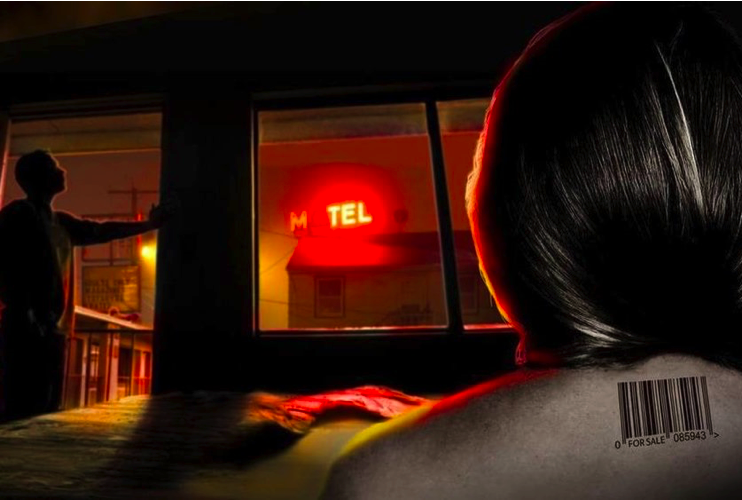Artificial intelligence, digital marketing, and social media give us all a vast array of advantages with their introduction into many facets of our society, but there have been some results we haven’t expected. Tragically, they have also enabled criminal enterprises to take advantage of the power and invisibility of technology to run vast networks of illegal sex operations and human sex trafficking across Australia and the world, in plain sight, with little chance of ever being caught.
Thought leaders have demonstrated how machine learning technology is enabling new strategies to locate and prosecute those who profit from the worst of the illegal sex trade. In breaking new ground with AI, this innovative technology has been applied to track down criminals who were posting ads on behalf of someone else, which in the past had made locating the traffickers almost impossible, by making them invisible to law enforcement.
These criminals were literally “selling” dozens of women’s and children’s availability for sexual acts online, while these women and girls were silenced by fear and under the control of the trafficker. This is the awful reality of sex trafficking, much different from a woman promoting her own company for sale, which may or not be legal depending upon the jurisdiction. Both appeared to the casual observer, a potential customer, and to law enforcement, as the same thing – a girl selling sex.
A breakthrough came in 2015. This case in Pennsylvania exposed a man called Cedric Boswell. He had 6,306 photos of women and children on his phone. Law enforcement officers suspected that these images could be found on the Backpage website, where sex workers, pimps, and traffickers would place ads for sex. Backpage, since closed down by the FBI, was the number one place for selling sexual services. It was the first place law enforcers went, and it was also the place where police found his particular advertisement. However, police had the issue of trying to connect all those images on the phone to particular ads to prove that Boswell was advertising those images for sexual services on Backpage as a sex trafficker. Police weren’t keen to spend time manually checking each image on this site and trying to match them with one of his images – this “opportunity-cost” protection had until then been used by traffickers to ensure they could operate with impunity.
However, Julia Kocis, a dedicated anti-trafficking officer had an idea. She was referred to Traffic Jam, a software technology that was specifically designed to aid sex trafficking investigations by the use of artificial intelligence. ‘We ran the images and phone number through the tool,’ she says, ‘and it brought back all the ads he’d posted in just minutes. Then I played around with it, and it showed a map of where the phone number was used to post girls at different locations, and over time.’
Apparently, the evidence provided by this tool was “a smoking gun.” It was enough to convict Cedric Boswell for sex trafficking and he is now serving up to 26 years in prison. Effectively, Traffic Jam is part of a cluster of new tech tools bringing machine learning and artificial intelligence to the fight against sex trafficking. AI doesn’t promise to be a magic solution for this problem, but for early adopters it is catalysing the rate of sex trafficking investigations, allowing law enforcers to conduct 10 times as many investigations as they used to. And AI never takes a coffee break.
These AI tools may be the first time there is the potential for law enforcement with their limited resources to “reverse-engineer” the criminals’ the multitude of anonymous interactions, enabling them to be collated, tracked, and identified. Before this, there was mainly only the untraceable single girl in a hotel room with a mobile phone who would not be there next week, and it was understandably a poor use of police time to try and stop these, apparently, single operators.
We’re told that sex trafficking into Australia is relatively small, protected as we are by strong borders and it being an island country. Ten years ago, the research showed over a period of 2 years there were only 117 prosecutions for sex trafficking in Australia but of these only four convictions were made and three of those are under appeal. With limited resources, the time to investigate each suspected crime – sometimes years – and the complexity of the transnational crime itself means it is undoubtedly a larger problem than it appears, particularly as victims are reticent to talk. What we do know is that there is a flourishing illegal sex trade in Australia with girls operating from rented hotels and motel rooms, in precisely the same way this trade is run around the world. There is little reason to doubt the heavy hand of the sex trafficking industry is behind much of this trade.
Perhaps this new tool and similar innovations will enable a new approach – something like being able to cut out cancer rather than punishing/rehabilitating the victims of the disease. We can hope that our Federal Police are able to work hand in hand with State and International police to continue to keep our borders strong, and importantly, using the innovations in AI to enhance their work trying to eradicate the heinous crime of human child sex trafficking.
